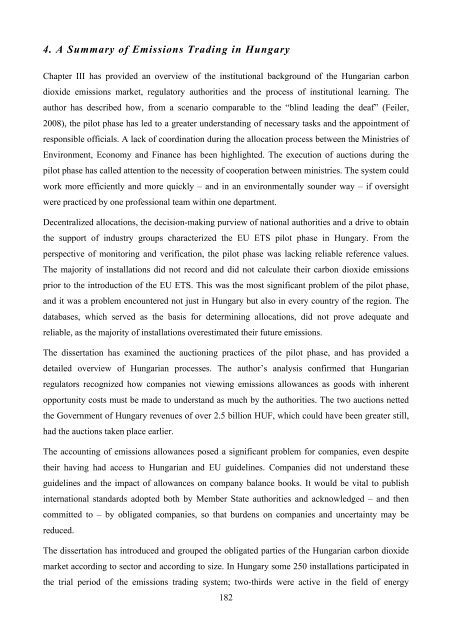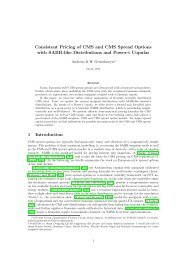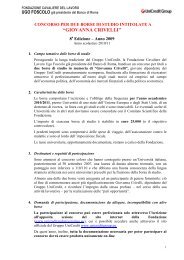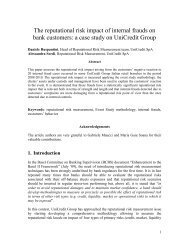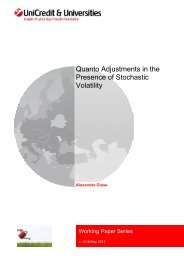Dóra Fazekas Carbon Market Implications for new EU - UniCredit ...
Dóra Fazekas Carbon Market Implications for new EU - UniCredit ...
Dóra Fazekas Carbon Market Implications for new EU - UniCredit ...
Create successful ePaper yourself
Turn your PDF publications into a flip-book with our unique Google optimized e-Paper software.
4. A Summary of Emissions Trading in Hungary<br />
Chapter III has provided an overview of the institutional background of the Hungarian carbon<br />
dioxide emissions market, regulatory authorities and the process of institutional learning. The<br />
author has described how, from a scenario comparable to the “blind leading the deaf” (Feiler,<br />
2008), the pilot phase has led to a greater understanding of necessary tasks and the appointment of<br />
responsible officials. A lack of coordination during the allocation process between the Ministries of<br />
Environment, Economy and Finance has been highlighted. The execution of auctions during the<br />
pilot phase has called attention to the necessity of cooperation between ministries. The system could<br />
work more efficiently and more quickly – and in an environmentally sounder way – if oversight<br />
were practiced by one professional team within one department.<br />
Decentralized allocations, the decision-making purview of national authorities and a drive to obtain<br />
the support of industry groups characterized the <strong>EU</strong> ETS pilot phase in Hungary. From the<br />
perspective of monitoring and verification, the pilot phase was lacking reliable reference values.<br />
The majority of installations did not record and did not calculate their carbon dioxide emissions<br />
prior to the introduction of the <strong>EU</strong> ETS. This was the most significant problem of the pilot phase,<br />
and it was a problem encountered not just in Hungary but also in every country of the region. The<br />
databases, which served as the basis <strong>for</strong> determining allocations, did not prove adequate and<br />
reliable, as the majority of installations overestimated their future emissions.<br />
The dissertation has examined the auctioning practices of the pilot phase, and has provided a<br />
detailed overview of Hungarian processes. The author’s analysis confirmed that Hungarian<br />
regulators recognized how companies not viewing emissions allowances as goods with inherent<br />
opportunity costs must be made to understand as much by the authorities. The two auctions netted<br />
the Government of Hungary revenues of over 2.5 billion HUF, which could have been greater still,<br />
had the auctions taken place earlier.<br />
The accounting of emissions allowances posed a significant problem <strong>for</strong> companies, even despite<br />
their having had access to Hungarian and <strong>EU</strong> guidelines. Companies did not understand these<br />
guidelines and the impact of allowances on company balance books. It would be vital to publish<br />
international standards adopted both by Member State authorities and acknowledged – and then<br />
committed to – by obligated companies, so that burdens on companies and uncertainty may be<br />
reduced.<br />
The dissertation has introduced and grouped the obligated parties of the Hungarian carbon dioxide<br />
market according to sector and according to size. In Hungary some 250 installations participated in<br />
the trial period of the emissions trading system; two-thirds were active in the field of energy<br />
182


